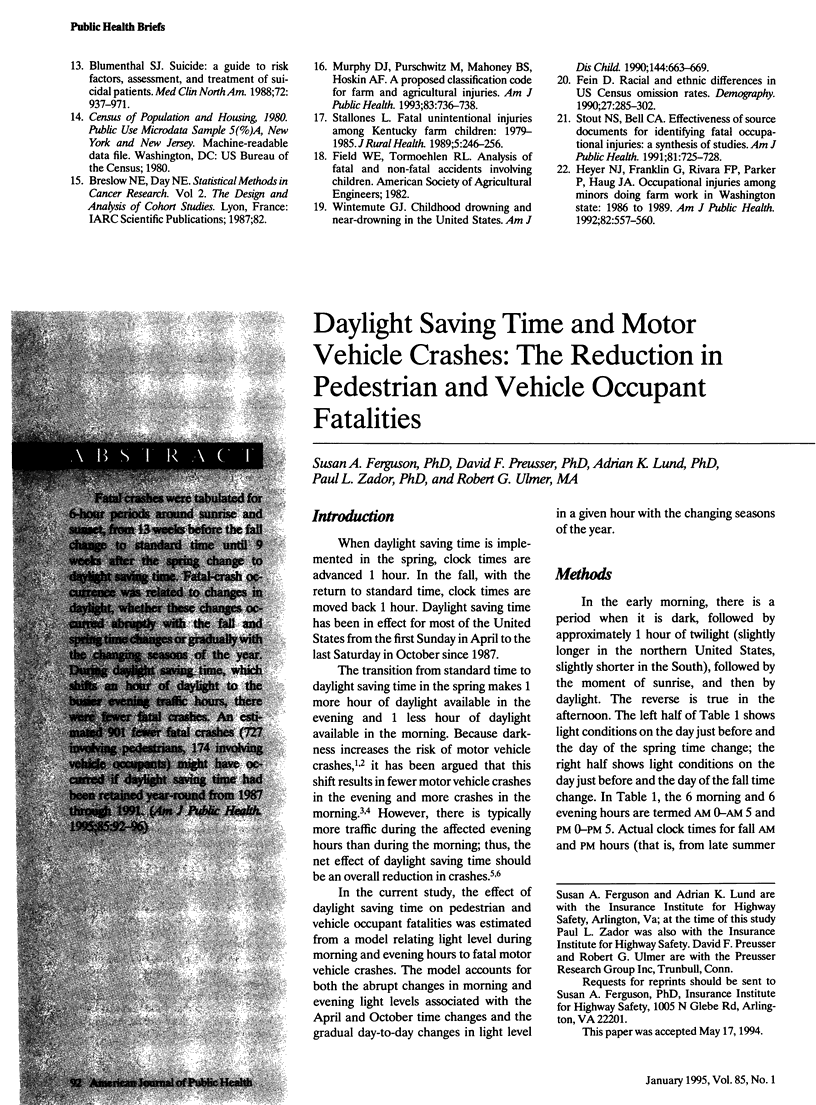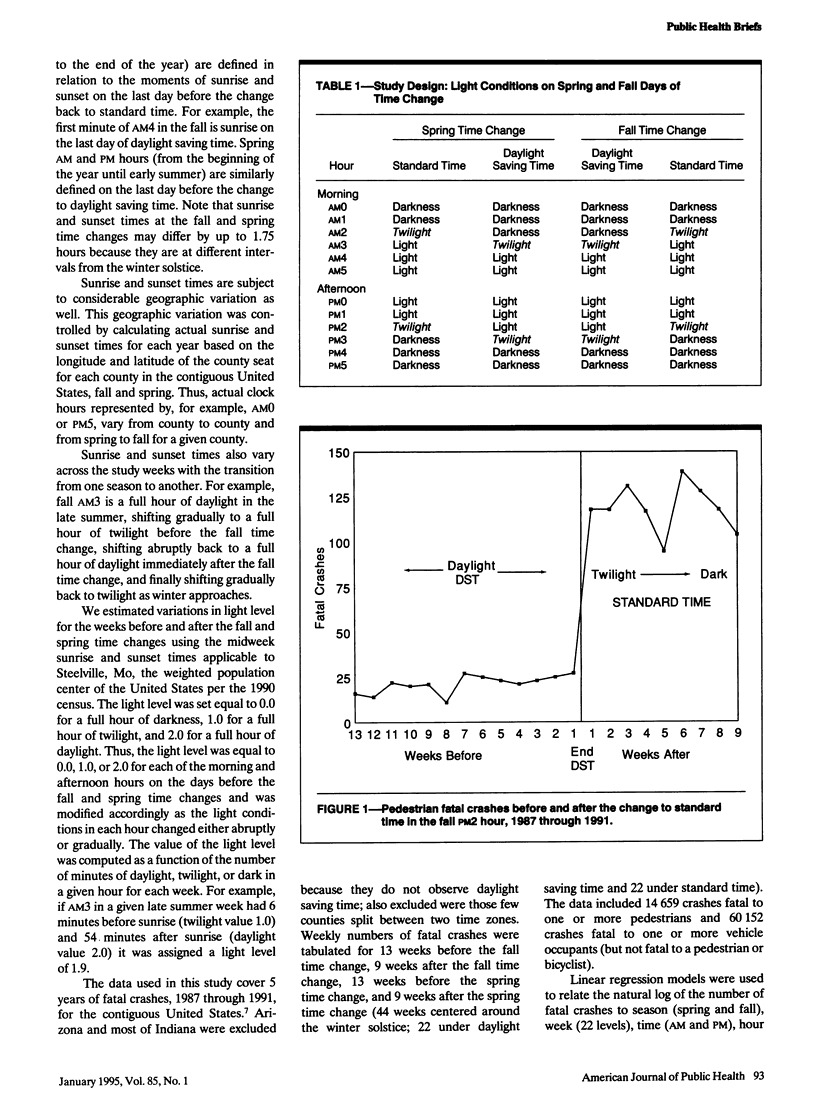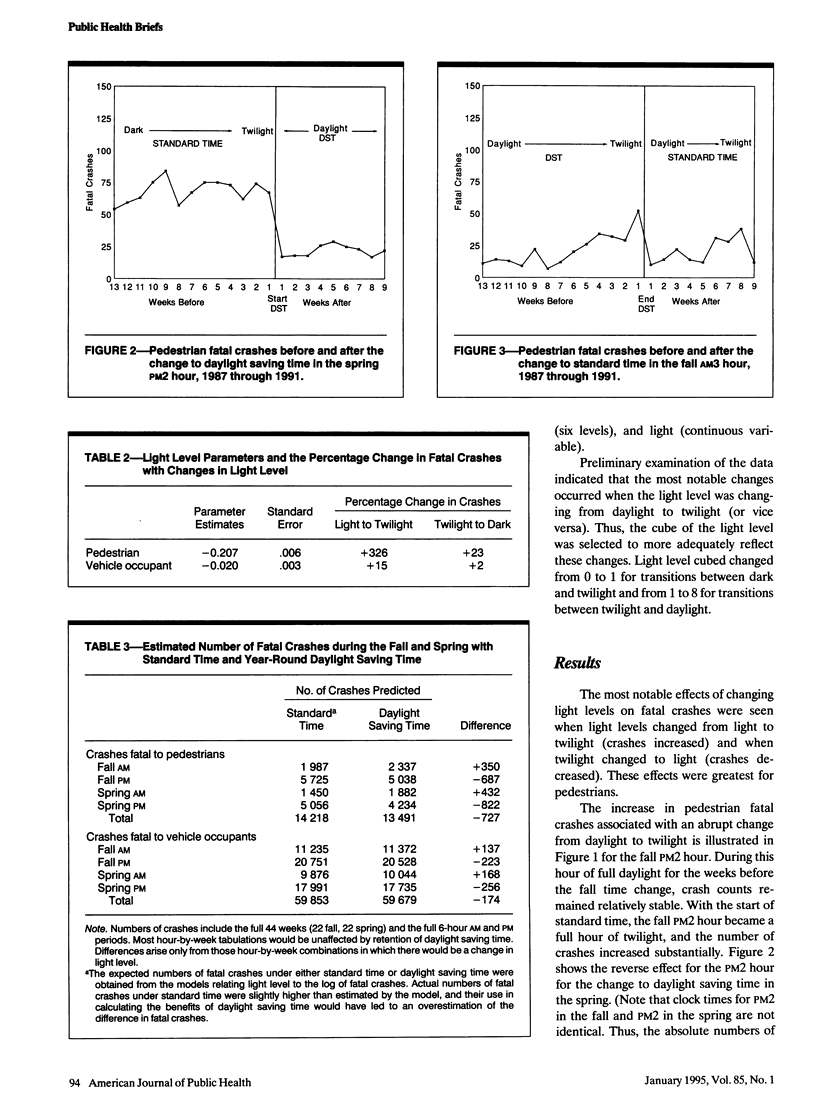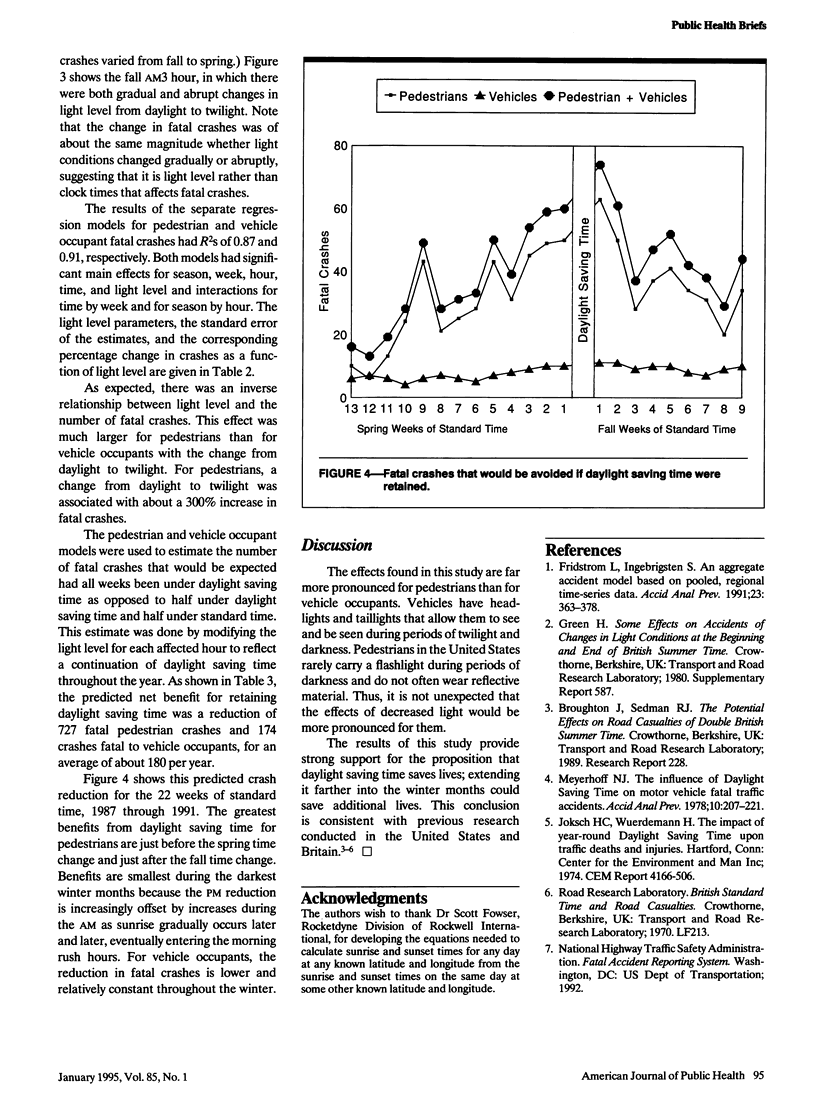Abstract
Fatal crashes were tabulated for 6-hour periods around sunrise and sunset, from 13 weeks before the fall change to standard time until 9 weeks after the spring change to daylight saving time. Fatal-crash occurrence was related to changes in daylight, whether these changes occurred abruptly with the fall and spring time changes or gradually with the changing seasons of the year. During daylight saving time, which shifts an hour of daylight to the busier evening traffic hours, there were fewer fatal crashes. An estimated 901 fewer fatal crashes (727 involving pedestrians, 174 involving vehicle occupants) might have occurred if daylight saving time had been retained year-round from 1987 through 1991.
Full text
PDF



Selected References
These references are in PubMed. This may not be the complete list of references from this article.
- Fridstrøm L., Ingebrigtsen S. An aggregate accident model based on pooled, regional time-series data. Accid Anal Prev. 1991 Oct;23(5):363–378. doi: 10.1016/0001-4575(91)90057-c. [DOI] [PubMed] [Google Scholar]


